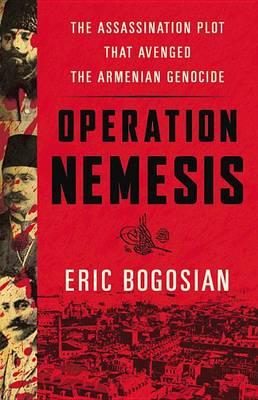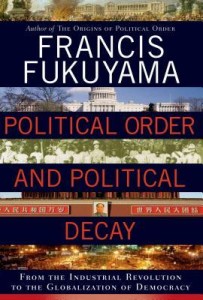Thousands of hours of research by renowned theater and television writer Eric Bogosian’s has turned his new book Operation Nemesis: The Assassination Plot that Avenged The Armenian Genoicide into a fluid, riveting.
2015 marks the Centenary of the largest ever massacre of Christians in history, in Armenia in 1915, when Muslim Turks turned the streets to blood. This is a masterful account of the assassins who hunted down the perpetrators of the Armenian Genocide.
In 1921, a tightly knit band of killers set out to avenge the deaths. They were a humble bunch: an accountant, a life insurance salesman, a newspaper editor, an engineering student, and a diplomat. Together they formed one of the most effective assassination squads in history. They named their operation Nemesis, after the Greek goddess of retribution. The assassins were survivors, men defined by the massive tragedy that had devastated their people. With operatives on three continents, the Nemesis team killed six major Turkish leaders in Berlin, Constantinople, Tiflis, and Rome, only to disband and suddenly disappear. The story of this secret operation has never been fully told, until now.
Eric Bogosian goes beyond simply telling the story of this cadre of Armenian assassins by setting the killings in the context of Ottoman and Armenian history, as well as showing in vivid color the era’s history, rife with political fighting and massacres. Casting fresh light on one of the great crimes of the twentieth century and one of history’s most remarkable acts of vengeance, Bogosian draws upon years of research and newly uncovered evidence.Operation Nemesis is the result–both a riveting read and a profound examination of evil, revenge, and the costs of violence.
A piece in The Huffington Post by Christopher Atamian escribes the book thus:
If you had to write a really brief elevator pitch for Eric Bogosian’s riveting new historical memoir Operation Nemesis: The Assassination Plot that Avenged the Armenian Genocide, it might go something like this: John Le Carré meets James Bond meets Murder on the Orient Express. Few historical exposés read so fluently: I picked up the book one recent afternoon and stayed up almost twenty-four hours to finish it.
Operation Nemesis was the remarkable plot to avenge the murder of 1.5 million Armenians perpetrated by the Young Turkish leadership after the Armenian Genocide. Planned mainly from headquarters in as unlikely a place as Watertown, Massachusets, Operation Nemesis was masterminded by Shahan Natalie and a small cohort of Tashnags colleagues. The Tashnags are a nationalist party that had at one time been allied with the Young Turks or Ittihad ve Terraki (also known as The Party of Union and Progress) and collaborated to overthrow Sultan Abudul Hamid II in 1908 and theoretically establish a new democratic state on the lands of the Ottoman Empire. The streets of Istanbul brimmed with hope as all parties anticipated a more open future of equality, including the Jewish and Christian minorities of the Empire.
It seems that you always have to be careful of any political party with the word “progress” in it and true to form the Young Turkish leadership, grown paranoid at the loss of its Balkan territories, soon turned on the unsuspecting Armenians. Within a decade or so after taking power, these same men–led by a trio of “Pashas”–Enver Pasha, Mehmet Pasha and Djemal Pasha–ordered the mass murder of the Armenians and remaining Christians in the former Ottoman Empire. In the first genocide of the 20th century, they would bear the ultimate responsibility for killing 3 million Christian Greeks, Assyrians and Armenians .
For Operation Nemesis, revenge wasn’t particularly swift, but it was certainly thorough. In the course of a little under a half decade, almost the entire former Young Turkish leadership was gunned down in cold blood by a group of small-time merchants and youth of limited funds. In due order Djemal, Talaat and Enver as well as Dr. Behaeddin Shakir–the Armenian Hitler-Goebbels-Eichmann and Mengele–a good dozen or so people–would be dead. (Enver was actually killed by the Russians in 1922).
Bogosian’s wonderfully fast-paced and eminently readable work asks important questions about how one writes and represents history: how did the real story behind Operation Nemesis remain hidden for so long: the popular version has it that Talaat Pasha’s killer Solomon Tehlirian acted alone and ran into Talaat on a Berlin Boulevard, almost as if he were casually walking his dog. How did the Armenians track all these Turkish leaders down and snuff them out (Bogosian’s possible answer is surprising, as he explains in the interview below) Was any of this justified or understandable? What lessons can we take away from the legacy of the genocide and those who avenged it?
Operation Nemesis is that rare book, part historical opus, part detective story. An example of Bogosian’s fluid narration:
“What Talaat did not know as he strolled down Berlin’s fashionable Hardenbergstrasse on this cool spring morning was that his alias had already been discovered. Danger was much closer than he imagined. Even as he stepped lightly among the local Berliners on his way to the Tiergarten park, he was being followed. Across the street and parallel to him, a young Armenian émigré from Turkish Armenia tracked his course. Unlike Talat, Soghomon Telihrian was almost invisible, figuratively and literally. No one knew his name, no one in Berlin would ever recognize him, and in the midst of this posh neighborhood of White Russian émigrés, he did not stand out at all. In a few moments, that anonymity would end.”
If you want the details of what happens next, then you will just have to buy a copy of the book!







